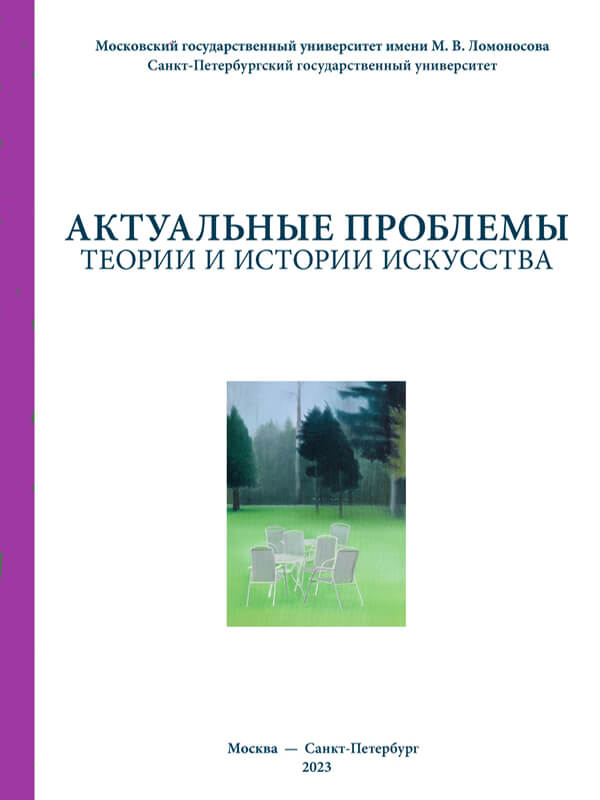The Theme of Magic in Florentine Picture-Chronicle Drawings (British Museum, London): Motifs, Textual and Iconographic Origins
DOI:
https://doi.org/10.18688/aa2313-5-41Keywords:
Picture-Chronicles manuscripts, Florentine Chronicle, Maso Finiguerra, Baccio Baldini, motifs of magic in Renaissance artAbstract
The study aims to investigate the drawings of the Florentine Picture Chronicle (c. 1470–1475, British Museum, London) dedicated to the motifs of magic. The authorship of that book of drawings is associated with the circle of Maso Finiguerra and Baccio Baldini. The content of the album is based on a general program that represents world history in visual images. The theme of magic within the compositions of the “Florentine Chronicle” is an important semantic line. Its pages contain the collected figures of Zoroaster, Ostanes, and Hermes Trismegistus, as well as many characters of Greco-Roman mythology and the Old Testament, who appear in the light of their possession of secret knowledge. The article considers the iconographic prototypes of the drawings and analyzes the literary texts that influenced the choice and determined the pictorial interpretation of the characters. Special attention has been paid to the historical and cultural context of life in 15th-century Italy, which sparked an interest in the theme of magic in art.
References
Aakhus P. Astral Magic in the Renaissance: Gems, Poetry, and Patronage of Lorenzo de’ Medici. Magic, Ritual, and Witchcraft, vol. 3, no. 2, Winter 2008, University of Pennsylvania Press Publ., pp. 185–206.
Akopian O. L. Volki v ovech’ikh shkurakh: ‘Rassuzhdeniia protiv proritsatel’noi astrologii’ i renessansnaia mysl’ Italii kontsa XV – nachala XVI v. (Wolves in Sheep’s Clothing: The Disputationes adversus astrologiam divinatricem and Italian Renaissance thought in the Late 15th – Early 16th Centuries). Moscow; St. Petersburg, Center for humanitarian initiatives Publ., 2018. 256 p. (in Russian).
Amberger A. Giordano Orsinis Uomini Famosi in Rom. Helden der Weltgeschichte im Frühhumanismus. München; Berlin, Deutscher Kunstverlag Publ., 2003. 544 p. (in German).
Attrell D.; Porreca D. (trans.). Picatrix: A Medieval Treatise on Astral Magic (Magic in History). Based on the Latin edition by David Pingree. Penn State University Press, 2019. 372 p.
Barney S. A.; Lewis W. J.; Beach J. A.; Berghof O. (ed. and trans.). The Etymologies of Isidore of Seville. Cambridge, 2009. 475 p.
Boccaccio G. Genealogy of the Pagan Gods, vol. 1, books 1–5. Cambridge, MA; London: Harvard University Press Publ., 2011. 887 p.
Bogutskii K. (trans.). Germes Trismegist i germeticheskaia traditsiia Vostoka i Zapada (Hermes Trismegistus and the Hermetic Tradition of East and West Compilation). Kiev, Iris; Moscow, Aletheia Publ., 1998. 623 p. (in Russian).
Colvin S. A Florentine Picture-Chronicle. London, 1898. 99 p.
Copenhaver B. Hermes Trismegistus, Proclus and the Philosophy of Magic. Merkel I.; Debus A. G. (eds). Hermeticism and the Renaissance: Intellectual History and the Occult in Early Modern Europe (Folger Institute Symposia). Washington, Folger Books, The Folger Shakespeare Library Publ., 1988, pp. 79–110.
Dannenfeldt K. H. The Pseudo-Zoroastrian Oracles in the Renaissance. Studies in the Renaissance, 1957, vol. 4, pp. 7–30.
Davisson D. Magian “Ars Medica”, Liturgical Devices, and Eastern Influences in The Medici Palace Chapel. Studies in Iconography, 2001, vol. 22, pp. 111–162.
Forshaw P. J. From Occult Ekphrasis to Magical Art Transforming Text into Talismanic Image in the Scriptorium of Alfonso X. Kiyanrad S.; Theis Ch.; Willer L. (eds). Bild und Schrift auf ‘magischen’ Artefakten. Berlin; Boston, De Gruyter Publ., 2018, pp. 15–47.
Jerome of Stridon. One Book of Commentary on the Prophet Daniel. Tvoreniia blazhennogo Ieronima Stridonskogo (Creations of Blessed Jerome of Stridon), vol. 12. Kiev, 1894, pp. 1–145 (in Russian).
Klingshir W.E. Isidore of Seville’s Taxonomy of Magicians and Diviners. Traditio, 2003, vol. 58, 2003, pp. 59–90.
Lactantius. The Divine Institutes, Books I–VII (The Fathers of the Church, Vol. 49). Sister McDonald M. F. (trans.). Washington, 1964. 561 p.
Olah I. The Civic Cornucopia of Ornament. Somatic Visioning of the Festive City in the Florentine Picture Chronicle (1470–75): Ph. D. Thesis. University of Chicago, 2013.
Pingree D. (trans). Picatrix: The Latin Version of the Ghāyat Al-Ḥakim. Text, Introduction, Appendices, Indices. Studies of the Warburg Institute, vol. 39, 1986, pp. lxxxi, 326.
Piven M. G. Illustrated Chronicle Manuscripts of the 15th Century: Problems of the Research and Interpretations. Zakharova A. V.; Maltseva S. V.; Staniukovich-Denisova E. Iu. (eds). Actual Problems of Theory and History of Art: Collection of Articles, vol. 11. St. Petersburg, St. Petersburg University Press Publ., 2021, pp. 559–571 (in Russian). DOI: 10.18688/aa2111-06-44
Piven M. G. The 15th-Century “Picture-Chronicles” Manuscripts. Miniatures Iconography in The Context of Migration of Art Images in Humanistic Art. Novoe iskusstvoznanie (New Art Studies. History, Theory and Philosophy of Art), no. 3, 2022, pp. 54–63 (in Russian). DOI 10.24412/2686-7443-2022-3-54-63
Popham A. E. Italian Drawings in the Department of Prints and Drawings in the British Museum: the Fourteenth and Fifteenth Centuries. London, Trustees of the British Museum Publ., 1950. 230 p.
Reufer C. Die Florentiner Bilderchronik. Prozessualität negativen Transfers im Medium des Zeichnungsbuchs. Dynamiken Der Negation: (Nicht)Wissen und negativer Transfer in vormodernen Kulturen. Wiesbaden, Harrassowitz Verlag Publ., 2021, pp. 293–312 (in German).
Skempis M. Der orphische Hymnos auf Chthonios Hermes (57): Genealogie, Eros, Ritual. Wiener Studien, 2016, vol. 129, pp. 155–187 (in German).
The Natural History of Pliny, vol. 5. London, 1855. 523 p.
The Sonnets, Triumphs, and Other Poems of Petrarch: The Canzonieres, Ballatas, Madrigales and Sestinas. Complete with Biography and Excerpts of Letters. Dallas, 2018. 218 p.
Warburg A. The Picture Chronicle of a Florentine Goldsmith. Warburg A. The Renewal of Pagan Antiquity. Los Angeles, CA, Getty Research Institute for the History of Art and Humanities Publ., 1999, pp. 165–168.
Whitaker L. The Florentine Picture Chronicle: A Reappraisal. M. Phil. Thesis. Courtauld Institute of Art, University of London, 1986.
Yates F. A. Giordano Bruno and the Hermetic Tradition. Chicago; London, 1964. 480 p.


